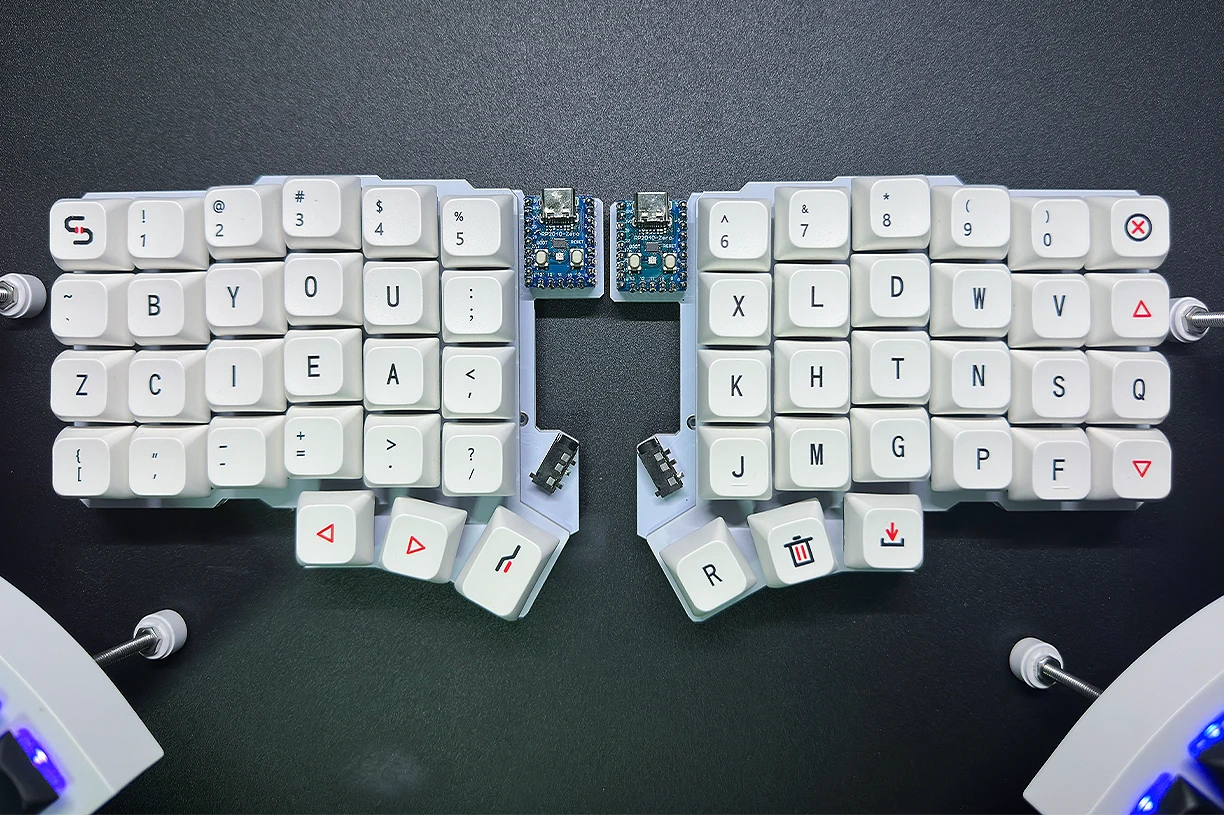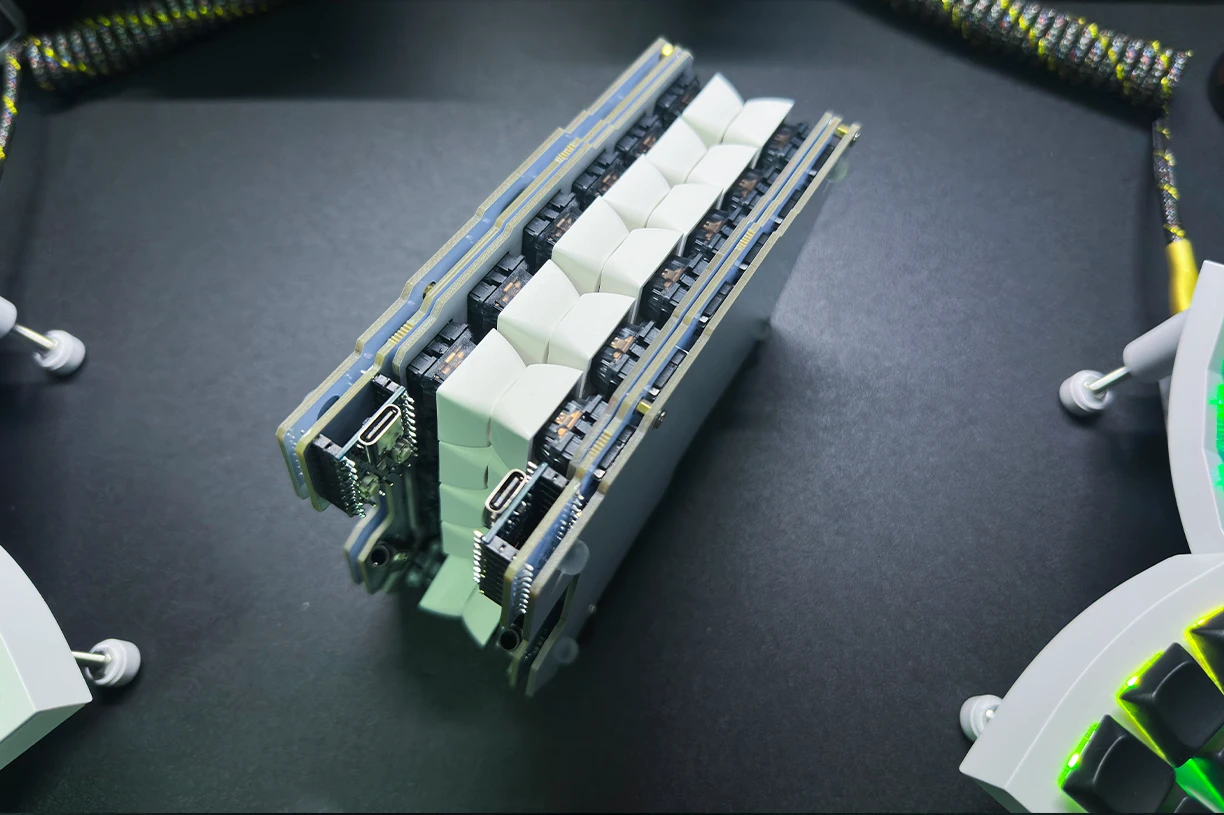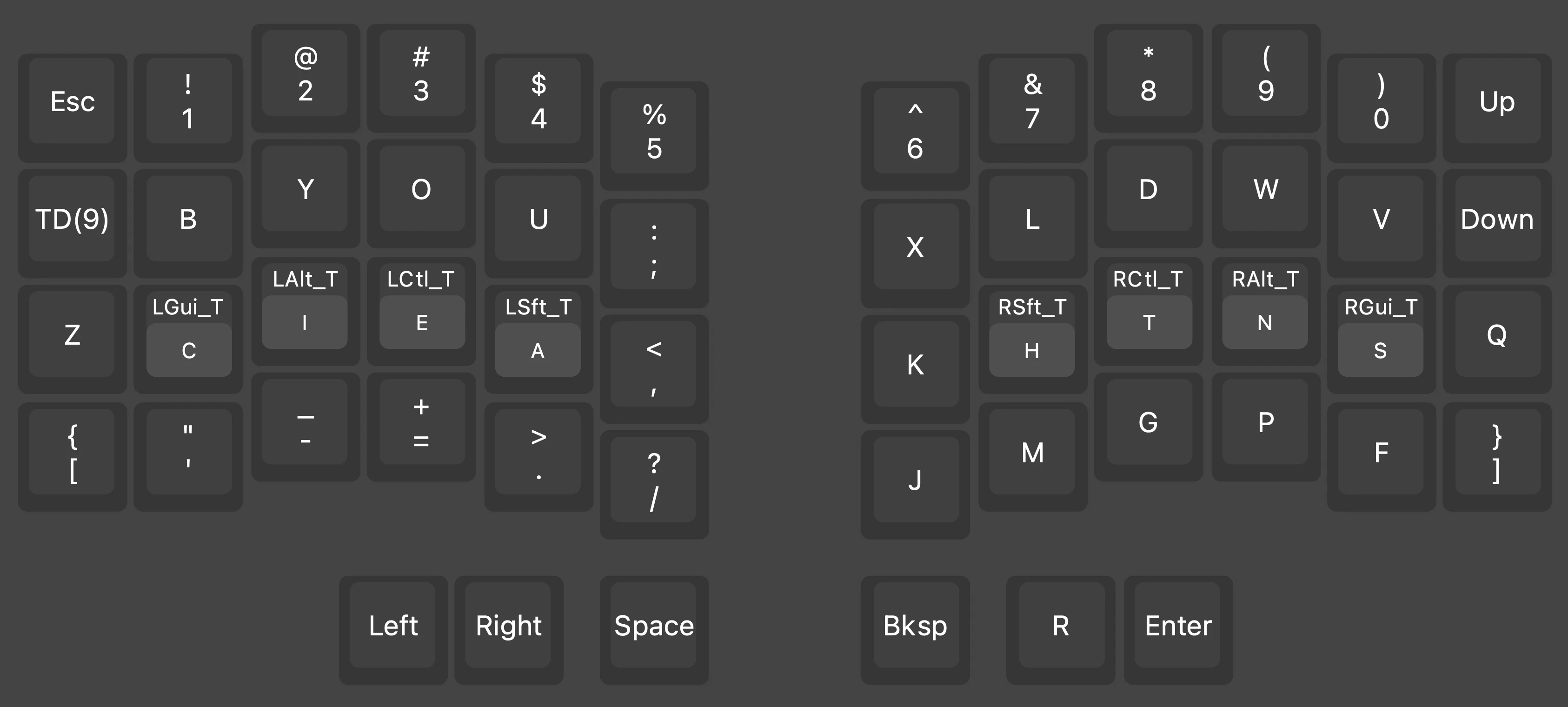Silakka54 Keyboard
Overview
This is my custom mechanical keyboard that I bought in 2025, April. I wanted something smaller than my Glove80 for portability and a more budget oriented split keyboard that I can bring around.
It came down to a few choices, like the Corne, Sofle, Lily58, Silakka54 etc. These are the popular budget friendly options that my research on Reddit has lead me to. Additionally, I didn't want to deal with any soldering, so that leaves quite a lot of options out, as most of them that come with hotswap sockets are quite expensive.
Keyboard Specifications
Physical Design
- Form Factor: Split ergonomic
- Profile: Low profile (30mm from keycap to table)
- Color: White
- Weight: Approximately 205g each, so 410g total
Ergonomic Features
- None Will be up to the user to customise, I plan to order some custom solution to give the board some tent
Key Technology
- Switches: Akko V3 Creamy Black Pro
- Keycaps: XDA Keycaps
- Backlight: None
Connectivity & Features
- Connection: Wired - USB-C and TRRS cable for connecting both halves
- Battery Life: Wired
- Customization: QMK/VIAL Web-based Layout Editor
- Mounting: Up to the user
Silakka54 Gallery



Typing Experience
Here's what makes this keyboard special to me and how it enhances my typing and programming workflow.
Sound Profile and Feel
The keyboard has a loud sound profile due to the Akko V3 Creamy Black Pro switches.
The typing feel is firm as the switches have a 55g spring which provides excellent feedback.
Ergonomics
The split design of this keyboard allows me to position both halves at shoulder's width, which for me, encourages an upright posture and makes slouching an awkward position.
Customizations
I've customized the keyboard with Sunaku's custom layout, the Glorious Engrammer v41 layout, with slight modifications to fit the 54 keys of the Silakka54; down from the 80 keys of the Glove80. It uses Home row mods which either send normal keycodes (such as the letter A or the number 1) when tapped or modifiers (such as Shift or Ctrl) when held. An image of this keymap can be seen below.

Silakka54 specific changes include mapping the C1R4 on the left to [ and the C1R4 on the right to ]. TD0 to TD7 mimics Sunaku's homerow mod of Win, Alt, Ctrl, and Shift. And as I type this paragraph with the Silakka54, I definitely feel the lack of keys, especially the thumb cluster.
Benefits of the Enthium Keyboard Layout
The Enthium keyboard layout offers several significant advantages for typists seeking greater efficiency and comfort:
- Superior Ergonomics and Performance - Enthium scores exceptionally well in keyboard layout analyses, with remarkably low same-finger bigram rates (0.818%) and the lowest lateral stretch bigram rate (0.319%) among comparable layouts. It achieves excellent roll statistics (45.274%) whilst minimising redirects, creating a smoother typing experience.
- Thoughtful Key Placement - The layout places letters strategically to reduce strain, particularly by moving B and V to home row lateral positions to avoid stretching pinky fingers. This adjustment notably reduces pinky/ring scissors from 0.49% to 0.35%, addressing a common source of discomfort.
- Optimised for Programming - Punctuation marks are cleverly clustered to benefit programmers:
- Minus and equals are grouped for intuitive zoom shortcuts with Ctrl
- Comma and semicolon are positioned for efficient prev/next jumping in Vim
- Period and slash are arranged for convenient filesystem path navigation (./,../)
- Special characters are positioned to facilitate coding patterns like
->and=>arrows
- Familiar Design - Enthium combines the best aspects of existing layouts, maintaining the CIEA arrangement on the left hand's home row (like Engram 2.0) and HTNS on the right hand's home row (like Dvorak). This familiarity makes it easier for users of these layouts to transition.
- Quick Learning Curve - One can switch to Enthium with approximately six hours of practice spread over 2-3 days, particularly if coming from the Engram or Engrammer layouts.
- Balanced Hand Usage - The layout achieves a nearly equal distribution of work between left and right hands (roughly 45% and 46% respectively), preventing one-sided strain during extended typing sessions.